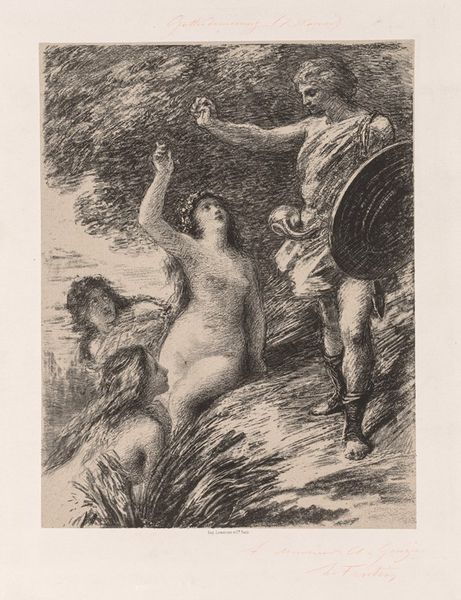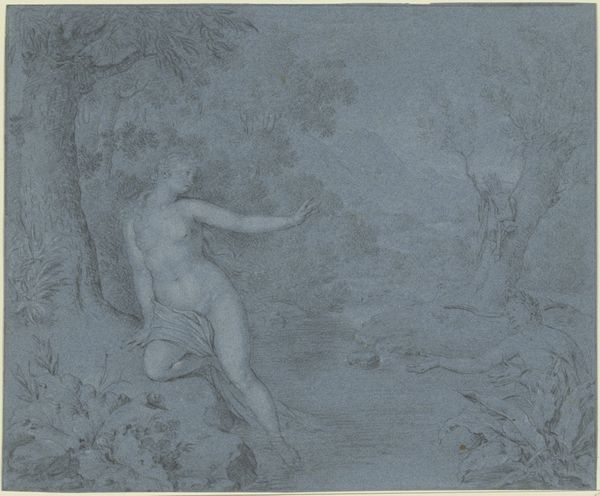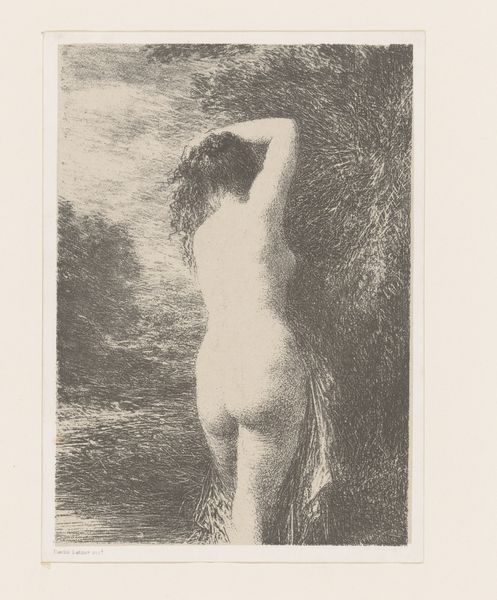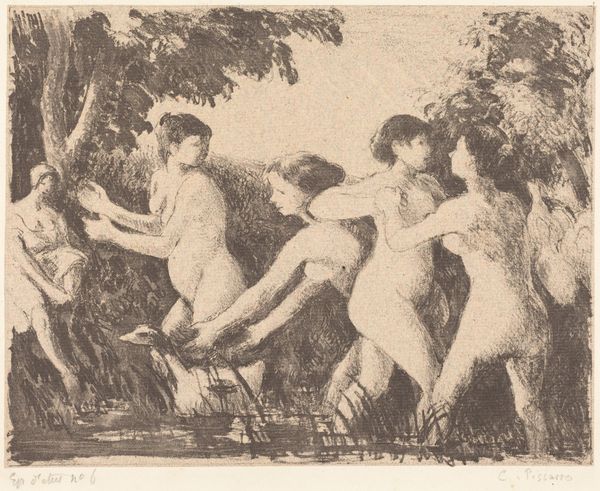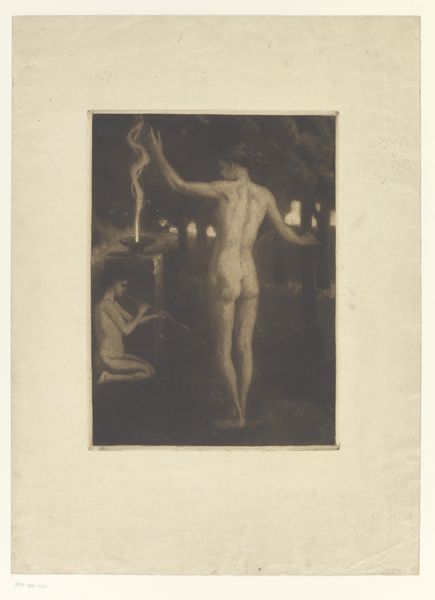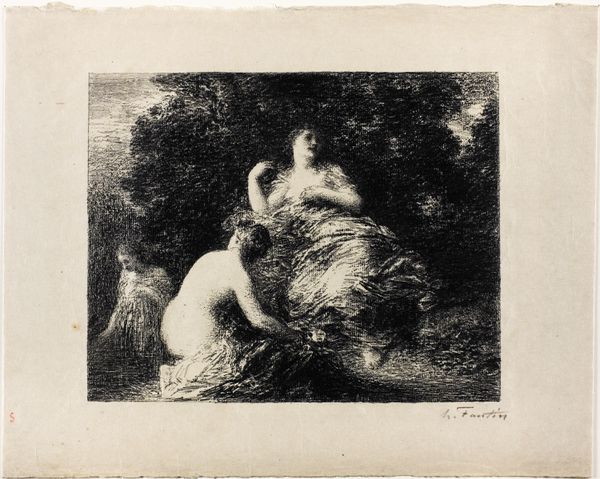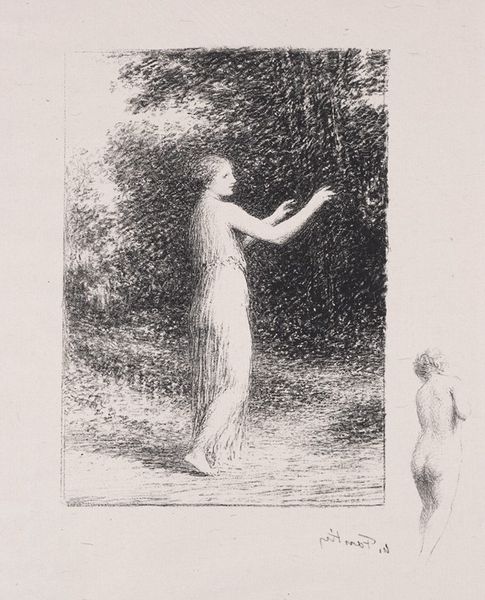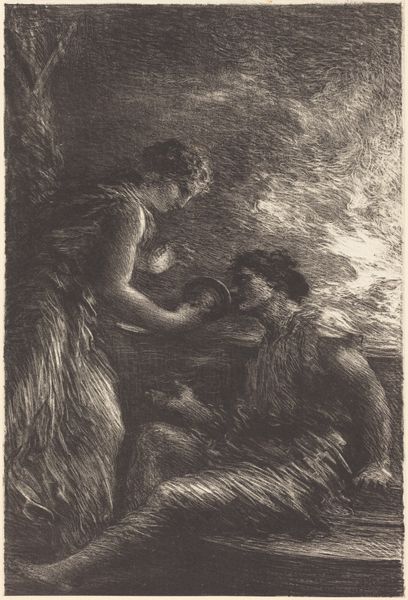
drawing, chalk
#
pencil drawn
#
drawing
#
16_19th-century
#
austrian
#
pencil sketch
#
landscape
#
figuration
#
pencil drawing
#
coloured pencil
#
chalk
#
watercolour illustration
#
nude
#
realism
Copyright: Public Domain
Editor: This chalk and pencil drawing, "Drei nackte Mädchen bei der Apfelernte," or "Three Nude Girls Harvesting Apples," seems to be from the 19th century, and the artist is Alois Johann Penz. The monochromatic blue gives it such a dreamlike quality, but there's also something almost…clinical about the nudes. What do you see in this piece? Curator: Immediately, I consider how the public perception of the nude form has shifted. Was this image intended for public consumption or private study? The nudity in relation to labor, specifically "apple harvesting," brings certain socio-cultural narratives into play, doesn't it? Were they acceptable during the 19th century? How does it reflect Austrian society's values at the time? Editor: Interesting, I hadn't thought of the intended audience. I was just focused on the figures themselves. So, if it *was* meant for a gallery, would its reception have been very different if displayed in a private salon? Curator: Absolutely! Public galleries upheld certain moral standards dictated by powerful cultural institutions. Displaying such a piece in a public sphere forces one to grapple with questions of propriety and societal values. Salons, however, might allow more free expression. Was Penz testing those boundaries? What do you make of their lack of overt sensuality in this nude scene? Editor: That’s true! The lack of sensuality, the figures look rather desaturated and even fatigued to some extent. They’re working. If the setting wasn't explicitly apple harvesting, it would've likely been interpreted differently in Austrian society. Curator: Exactly! The act of labor provides a context that potentially mitigates… or perhaps even amplifies… the potential shock of the nudity, depending on the viewer's predispositions, class, education, access. These historical filters are crucial to our understanding of Penz’s intention and reception. Editor: This reframes my understanding entirely, realizing the social impact an artwork can produce on Austrian society. Curator: Yes, thinking about it, these elements shift the dialogue about what art is meant to accomplish and who controls it.
Comments
No comments
Be the first to comment and join the conversation on the ultimate creative platform.

